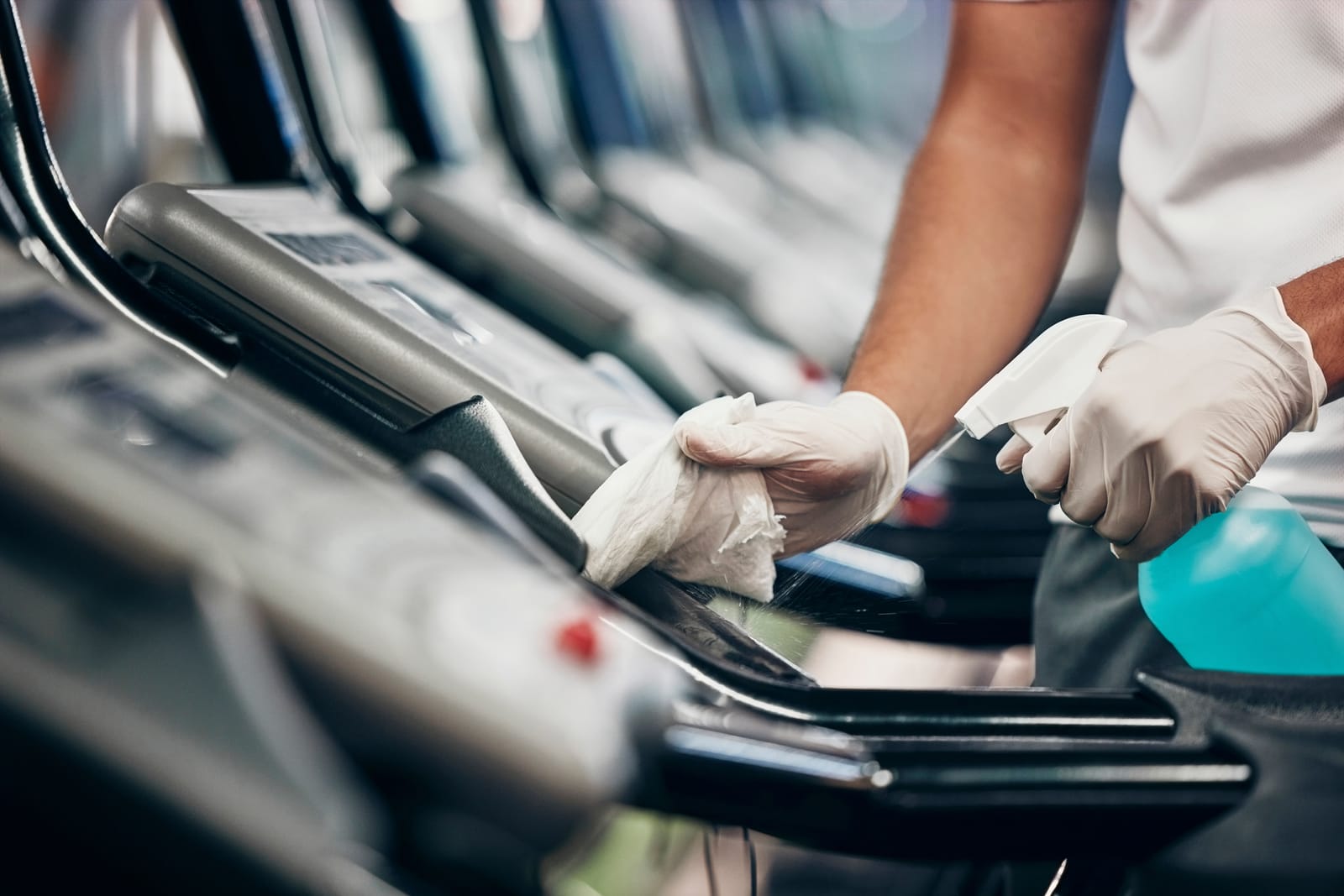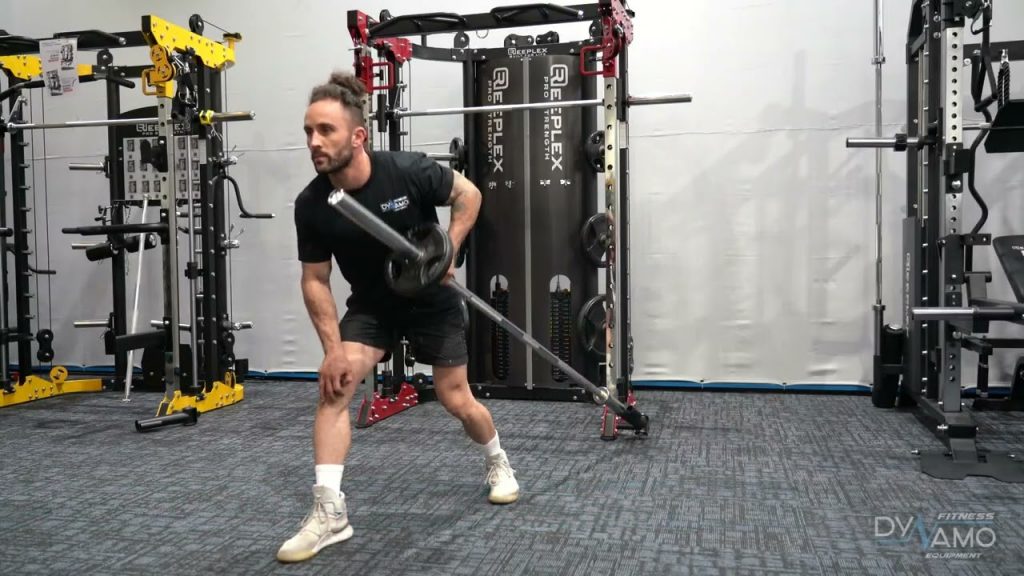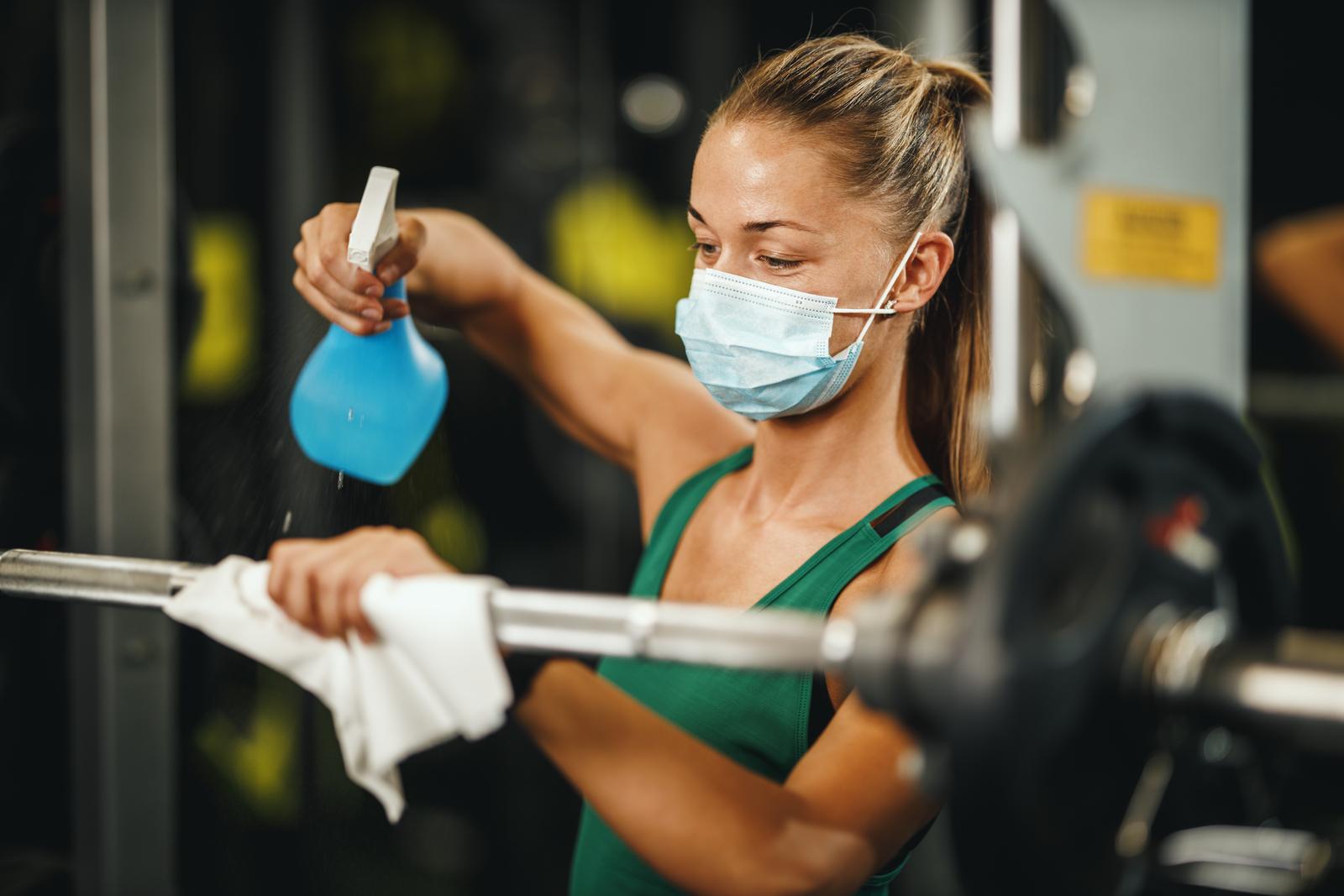
The Dos and Don’ts of Gym Equipment Maintenance
Gym equipment, like any significant investment, requires care and attention. Perhaps you’ve experienced the frustration of a treadmill that suddenly stops mid-jog or the annoyance of a squeaky stationary bike. These common challenges are not only disruptive to your workout but can also indicate the need for proper maintenance.
Maintaining gym equipment is essential for both gym owners and home fitness enthusiasts alike. It not only ensures the smooth operation and longevity of the equipment. But it also contributes to safe and effective workouts. When you maintain your equipment well, it performs according to your desire and provides you with the optimal environment for achieving your fitness goals.
We will discuss the dos and don’ts of gym equipment maintenance in this guide. Our guide will provide you with practical and easy-to-follow advice.
The Importance of Regular Maintenance For Your Gym Gear
Proper upkeep of your fitness equipment plays a critical role in its performance and lifespan. Just as you wouldn’t expect a car to run smoothly without regular oil changes and inspections, exercise equipment also requires consistent maintenance to operate at its best.
Regular Maintenance Prolongs the Equipment’s Lifespan
The longevity of your gym equipment is directly related to the care it receives. Regular cleaning, timely part replacements, and preventative maintenance checks can significantly extend your equipment’s life. You save on expensive repair or replacement costs down the line just by catching potential issues early.
![]()
It’s a simple equation: better maintenance equals a longer lifespan for your gear.
Equipment in Good Condition Ensures Efficient Workouts
The state of your equipment impacts your workout performance. Well-maintained gym equipment provides reliable, consistent resistance and motion. Regularly looking out for the maintenance of your equipment helps you to focus on your form and technique, rather than the quirks of a shaky weight machine, dysfunctional functional trainer, or a sticky elliptical.
The Risks That Come With Poorly Maintained Equipment
Let’s not forget one of the most crucial aspects: that is the safety of you and the people around you in a commercial gym. Poorly maintained home gym or commercial gym equipment poses a risk to users. Loose cables, worn-out pads, or non-responsive safety features can lead to accidents, sometimes severe ones.
The only way out of this is regular inspections and maintenance, which can timely identify these safety hazards. It allows you an opportunity to address them promptly and ensure a safe environment for yourself and your gym members.
The Dos of Gym Equipment Maintenance
Maintaining equipment for your home gym or commercial gym consists of a series of small, consistent actions that make a big difference over time.
1. Do Regular Cleaning
The first ‘do’ may seem obvious, however, it’s often overlooked. It’s easy to forget how much sweat, grime, and germs accumulate on gym equipment. Especially after an intense workout. This buildup not only affects the equipment’s performance. It can also become a breeding ground for bacteria.
The Why and How of Cleaning Your Gym Equipment
Regular cleaning is essential for several reasons.
- It helps keep the equipment hygienic for everyone.
- Dirt and grime can degrade certain materials faster, which leads to more wear and tear.
- Clean equipment just works better and lasts longer.
As for what to clean with, a gentle disinfectant is typically the best solution. For electronic components, use only manufacturer-recommended cleaning solutions.
How often should you clean the equipment? Aim to wipe down high-touch areas such as handles and control panels after every use. Full equipment cleaning should be performed at least once a week, depending on equipment usage.
2. Do Correct Use of Equipment
Equally important as cleaning, is the correct use of gym equipment. After all, even the most meticulously maintained machine won’t last long if it’s being used improperly.
The Risks of Equipment Misuse
Improper use quickly degrades gym equipment and caused unnecessary wear and tear. For example, slamming weights can cause premature damage to both the weights themselves and the machine’s mechanical parts. The same goes for barbells, dumbbells, and power racks.

On cardio equipment such as functional training equipment, incorrect form leads to unbalanced wear on belts and other components.
Even worse, using equipment incorrectly isn’t just bad for the machines – it’s potentially dangerous for the user as well. Incorrect form leads to injuries, from minor sprains to more serious issues.
How to Properly Use The Equipment for Long-Lasting
Here are a few tips:
- Educate Yourself and Others: It’s crucial to understand how each piece of equipment should be used. If you’re a gym owner, consider offering orientation sessions or tutorials for your members. If you’re using a home gym, refer to the manual and look up proper form equipment experts online.
- Use Control, Not Momentum: For weightlifting equipment, avoid dropping weights or using excessive strength. Lift and lower weights in a controlled manner to minimize the impact on the equipment.
- Adjust Equipment to Fit You: Many pieces of strength training equipment are adjustable. You need to make sure that you adjust the equipment to fit your body correctly before starting your workout.
Proper use of gym equipment is a key part of maintenance that often goes unnoticed.
3. Do Regular Inspections
You wouldn’t wait for your car to break down before taking it to the mechanic, right? Similarly, you shouldn’t wait for your equipment to malfunction before giving it a thorough check.
Why Regular Checks Matter
Regular inspections help spot potential issues before they escalate into bigger problems. This proactive approach saves you from costly repairs and also ensures the equipment is always safe for use.
Your Inspection Checklist
Here’s a basic checklist to guide you:
- Check for Loose Parts: Inspect bolts, screws, and other fasteners. Tighten anything loose. Replace any parts that are missing.
- Inspect Cables and Pulleys: Look for signs of wear or fraying on cables. Ensure that pulleys are running smoothly and aren’t sticking or squeaking.
- Test Safety Features: If your equipment has safety features like emergency stop buttons, check that they’re working correctly.
- Examine Upholstery: Check for tears or extreme wear in upholstered areas like seat pads and armrests. Damaged upholstery can be uncomfortable or even unsafe for users.
- Check for Unusual Noises: Listen for any unusual sounds when the equipment is in use. Squeaking, grinding, or clunking noises can indicate a problem.
4. Do Scheduled Professional Maintenance
Many aspects of gym equipment maintenance can be handled in-house. However, certain tasks are best left to the professionals. Just as you’d periodically take your car to a mechanic for a comprehensive tune-up. Your gym equipment also benefits from professional maintenance.
The What and When of Professional Maintenance
Professional maintenance typically involves more in-depth checks, adjustments, and repairs. This range of upkeep goes beyond regular user-level maintenance. This might include tasks like lubricating internal components, calibrating electronic systems, replacing worn-out parts, and inspecting internal mechanical parts.
Choosing a Reliable Service Provider
When it comes to selecting a service provider for professional maintenance, consider the following key factors:
- Experience and expertise
- Manufacturer affiliations or certifications
- Customer reviews and testimonials
- Responsiveness and communication
- Warranty and post-service support
The Don’ts of Gym Equipment Maintenance
Just as there are certain best practices to adhere to when maintaining gym equipment, there are also some pitfalls you should steer clear of. First on the list? The use of harsh chemicals.
1. Don’t Reach for Harsh Chemicals
We’ve all been there. There’s a stubborn stain or a particularly grimy spot on your gym equipment. And you’re tempted to reach for the strongest cleaning agent you can find. Hold that thought! While these powerful chemicals may make short work of dirt and grime, they can be seriously detrimental to your equipment.

Harsh chemicals cause premature wear and tear on your equipment. They damage upholstery, corrode metal parts, and potentially void your warranty. They can also be harmful to users as some chemicals cause skin irritation or breathing problems.
Gentler Alternatives to Consider
Instead of these harsh chemicals, consider gentler alternatives that are equally effective but much kinder to your equipment and its users. Some options include:
- Mild detergent and water
- Manufacturer-recommended cleaning solutions
- Environmentally friendly commercial cleaners
- Vinegar-based cleaning solutions
2. Don’t: Overlook Small Damages
Just like the proverbial small leak that sinks a great ship. Minor damages to gym equipment, if neglected, can morph into substantial problems. It’s all too easy to adopt an “if it’s not broken, don’t fix it” mentality. But that can be a risky gamble when it comes to maintaining gym equipment.
Why Sweat the Small Stuff
Small damages may seem inconsequential at first glance. A tiny tear on the seat upholstery, a slight wobble in the treadmill belt, or a small squeak, when you’re lifting weights, may seem like issues you can ignore for now. However, these seemingly minor problems often indicate larger underlying issues or can evolve into them if left unchecked.
That tiny tear can quickly expand with repeated use. It requires an entire seat replacement instead of a quick patch job. The wobbling treadmill belt could indicate a motor problem that could burn out the motor entirely. The squeaking weight plate machine could be a sign of misalignment that, over time, could cause excessive wear and tear.
When you address these small damages promptly, you’re actually preventing major problems down the line.
3. Don’t: Overdo the Lubrication
There’s a common misconception that more lubrication always equals better performance. However, this isn’t necessarily the case. Just like Goldilocks and her porridge, when it comes to lubrication, you need to get it ‘just right’.
Understanding the Risks of Over-Lubrication
While it’s true that lubrication is essential for many pieces of gym equipment, there might be too much of a good thing. Over-lubrication can lead to several problems.
Excessive lubrication can attract dust and dirt and lead to grime build-up that can hamper your equipment’s performance and longevity. Additionally, excess lubricant can drip onto other components or onto the floor which causes potential safety hazards.
Recognizing Signs of Over-Lubrication
Here are some red flags to watch out for that could indicate over-lubrication:
- Visible pools or streaks of lubricant
- Grease or oil stains on the floor below the equipment
- Excessive dust or grime build-up around moving parts
- Slipping or sliding during use
Gym Equipment Maintenance Checklist – Commercial & Home Gym Equipment
We understand that proper gym equipment maintenance is a challenging task. To simplify the process and ensure that nothing falls through the cracks, we’ve put together a comprehensive checklist. We’ve divided the tasks based on whether they should be performed daily, weekly, or monthly for ease of reference.
| Task | Daily | Weekly | Monthly |
|---|---|---|---|
| Cleaning | X | ||
| Wipe down surfaces with a mild cleaning solution | X | ||
| Clean upholstery with appropriate cleaners | X | ||
| Deep clean all surfaces | X | ||
| Inspection | X | ||
| Check for loose parts or screws | X | ||
| Inspect cables and pulleys | X | ||
| Test safety features | X | ||
| Examine upholstery for tears | X | ||
| Listen for unusual noises | X | ||
| Professional Maintenance | X | ||
| Schedule annual/bi-annual maintenance | X | ||
| Avoid Common Mistakes | X | X | X |
| Check for signs of over-lubrication | X | ||
| Address minor damages immediately | X | ||
| Use gentle cleaning agents, avoid harsh chemicals | X | X | X |
The above table provides a bird’s eye view of what your maintenance routine could look like. The frequency of certain tasks may vary based on the specific equipment and how often it is used. When in doubt, always refer to your equipment’s manual or consult with a professional of gym equipment online.
How to Implement a Successful Fitness Equipment Maintenance Routine
A consistent and effective gym equipment maintenance routine doesn’t have to be an uphill battle. With the right approach, you can transform it into a well-oiled machine. Here’s how:
Step 1: Understand Your Equipment
Start by familiarizing yourself with each piece of equipment in your gym. Review the user manuals. Understand the manufacturer’s recommendations. Know the dos and don’ts of operation. This knowledge is the foundation of any successful maintenance routine.
Step 2: Establish a Checklist and Schedule
Create a schedule using the maintenance checklist we provided earlier that suits your gym’s needs. Please note that the frequency of tasks can vary based on usage and the specific equipment.
Step 3: Delegate Responsibilities
If you’re running a commercial gym, train your staff on the importance of regular equipment maintenance. Assign them specific tasks from your checklist. For a home gym, build these tasks into your routine. Just as you would any other household chore.
Step 4: Stay Consistent
Consistency is key in maintenance. Make sure tasks are being completed as scheduled. Regular inspections and prompt attention to any issues will keep your equipment in top shape.
Step 5: Schedule Professional Maintenance
Don’t forget to schedule professional maintenance. They’ll be able to perform a deep inspection and address any issues you might have missed.
Reaping the Long-Term Benefits
Sticking to a routine may seem like a lot of work initially. But the long-term benefits are well worth it. Well-maintained gym equipment lasts longer, performs better, and provides a safer workout environment. The most important thing is that you’ll save money on major repairs or replacements in the long run.
Shop Your Gym Equipment from Dynamo Fitness Australia
If you’re motivated to improve your fitness and are in search of an extensive range of gym equipment available online, Dynamo Fitness has everything you need. Whether you’re a fitness enthusiast working out in the comfort of your home or a gym owner stocking up, get in touch with us.
![]()
Bench Press and Beyond: Versatile Equipment for a Comprehensive Workout
Our collection spans everything from bench presses and Olympic barbells to boxing gear. Our huge range ensures you have all you need to create a dynamic space. We have a versatile range of home gym equipment, Australia-wide. Each brand we stock is carefully curated based on quality, reliability, and performance.
Squat, Lift, and Tone with Quality Gear
Muscle building, toning, or endurance training, our gear can help you achieve it. Squat with confidence using our sturdy squat racks. Lift heavy with our robust Olympic barbells. Tone your muscles using our range of weight machines, functional fitness trainers, kettlebells, and bumper plates.
Affordable Equipment for Every Fitness Journey
We ensure the safe delivery of your selected products right to your doorstep. So, no matter where you are in Australia, you can enjoy a gym fit for your fitness journey.
Visit our mega showrooms in Melbourne, Sydney, and Perth to check out our products on-hands. Can’t make it to the stores? Visit us online at Dynamo Fitness.
